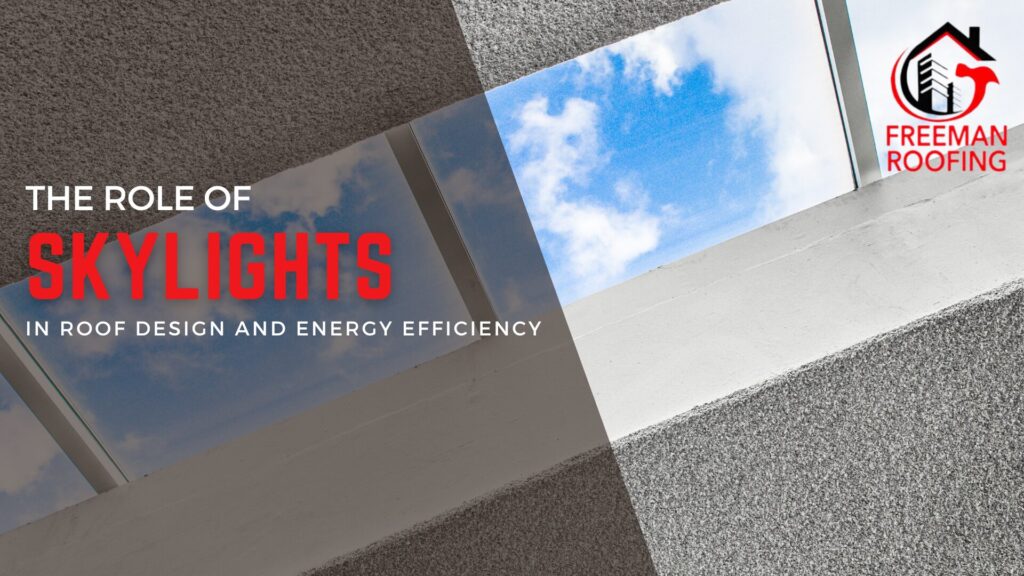The Role of Skylights in Roof Design and Energy Efficiency

From providing aesthetic benefits to reducing the need for artificial lighting, skylights also offers a range of advantages that make them an appealing option for homeowners. They are more than just a way to add natural light to your home; an integral part of modern roof design and can have a significant impact on your home’s energy efficiency.
Enhancing Roof Design with Skylights
Skylights are a powerful design tool that can elevate the look and feel of your home. When strategically placed, they can improve the flow of natural light and create a more open and airy atmosphere.
- Design Flexibility: Skylights come in a variety of styles, including fixed, vented, and tubular, allowing you to choose the option that best fits your aesthetic preferences and roof type.
- Boosting Natural Light: Skylights help illuminate darker spaces, like hallways or bathrooms, which may otherwise require additional lighting. This natural light can create a warm and welcoming atmosphere, reducing the need for artificial lighting during the day.
- Architectural Appeal: Adding skylights to your roof design can enhance the architectural style of your home, giving it a more modern or unique look that stands out in the neighborhood.
Skylights and Energy Efficiency
One of the primary reasons homeowners opt for skylights is the potential for improved energy efficiency. When correctly installed, skylights can reduce energy consumption by minimizing the need for artificial lighting and lowering heating and cooling costs.
- Reducing Energy Use for Lighting: Skylights can provide an abundance of natural light, allowing you to turn off indoor lights during the day. This simple change can result in significant energy savings, particularly in rooms with minimal window space.
- Insulating Your Home: Modern skylights are designed with energy efficiency in mind, featuring double or triple glazing and Low-E coatings that prevent heat loss in the winter and reduce heat gain in the summer. This can help maintain a comfortable temperature indoors and reduce the load on your HVAC system.
- Ventilated Skylights and Cooling: Some skylights come with ventilation options that allow for natural airflow. Opening a vented skylight on a hot day can promote passive cooling, helping to reduce reliance on air conditioning. This can be particularly beneficial in attics or top-floor rooms, which tend to trap heat.
Considerations When Installing Skylights
While such offer many benefits, proper installation and placement are key to ensuring that they improve energy efficiency without causing unwanted issues.
- Proper Placement and Size: These should be strategically placed to maximize their benefits. Overly large or poorly placed units can lead to overheating, especially in warmer climates. A professional roofing contractor can help determine the best size and location based on your home’s roof design and the climate in your area.
- Quality of Materials: Not all are created equal. To ensure the best energy performance, invest in high-quality with energy-efficient features such as thermal insulation, UV protection, and durable materials.
- Potential Leaks: They can be prone to leaks if not installed properly or if they age poorly. Regular maintenance and proper sealing are essential to prevent water damage and ensure their long-term performance.
Environmental Impact
In addition to reducing your energy bills, it can contribute to a more environmentally friendly home. By relying on natural light and reducing the need for artificial lighting, you decrease your overall energy consumption. Lastly, it can also help reduce your carbon footprint by lowering the amount of energy required to heat and cool your home.
Bottom Line
Skylights can provide a range of benefits, from enhancing the aesthetic appeal of your home to improving energy efficiency and reducing environmental impact. When installed correctly, they can play a significant role in making your home more sustainable and cost-effective.
